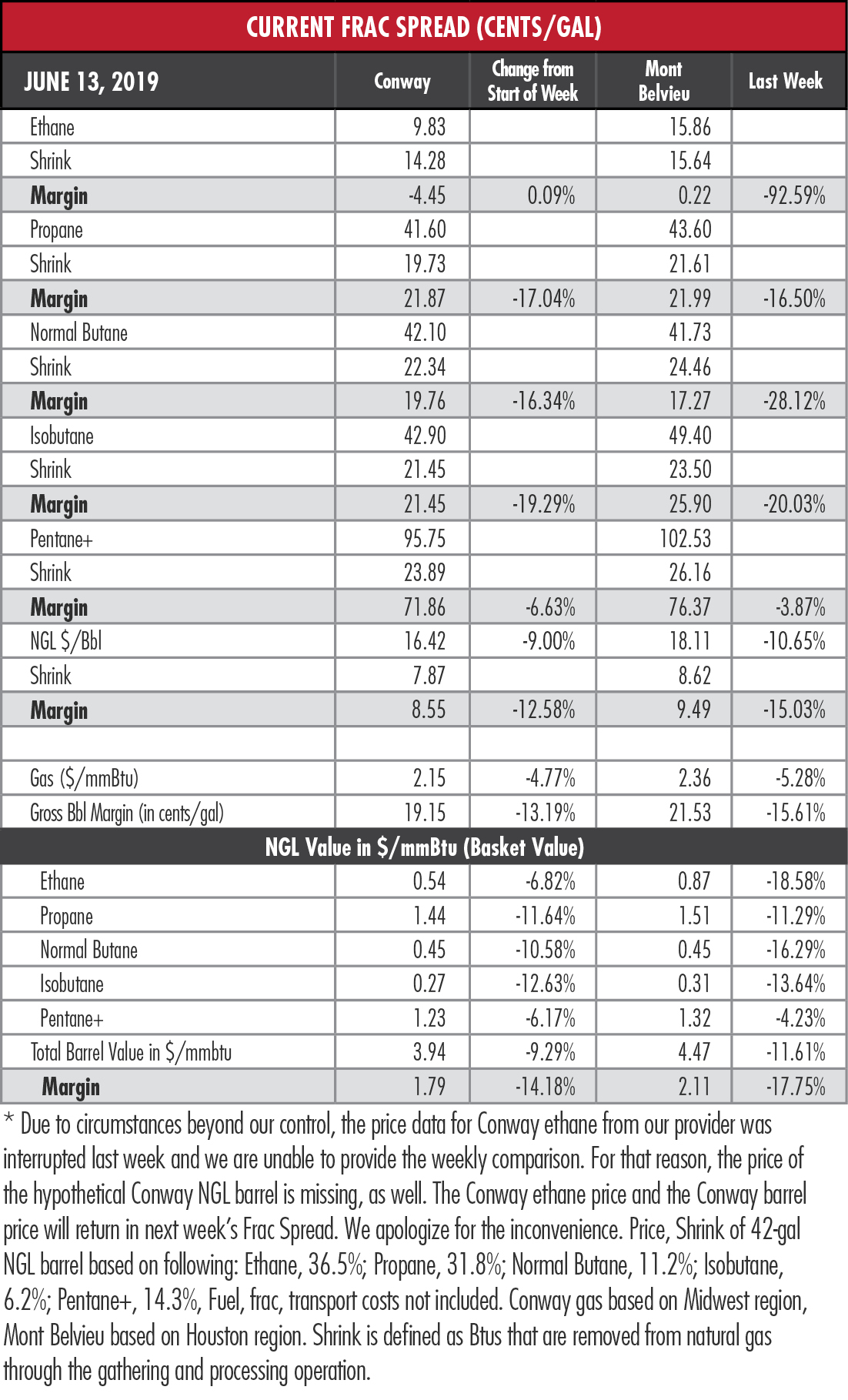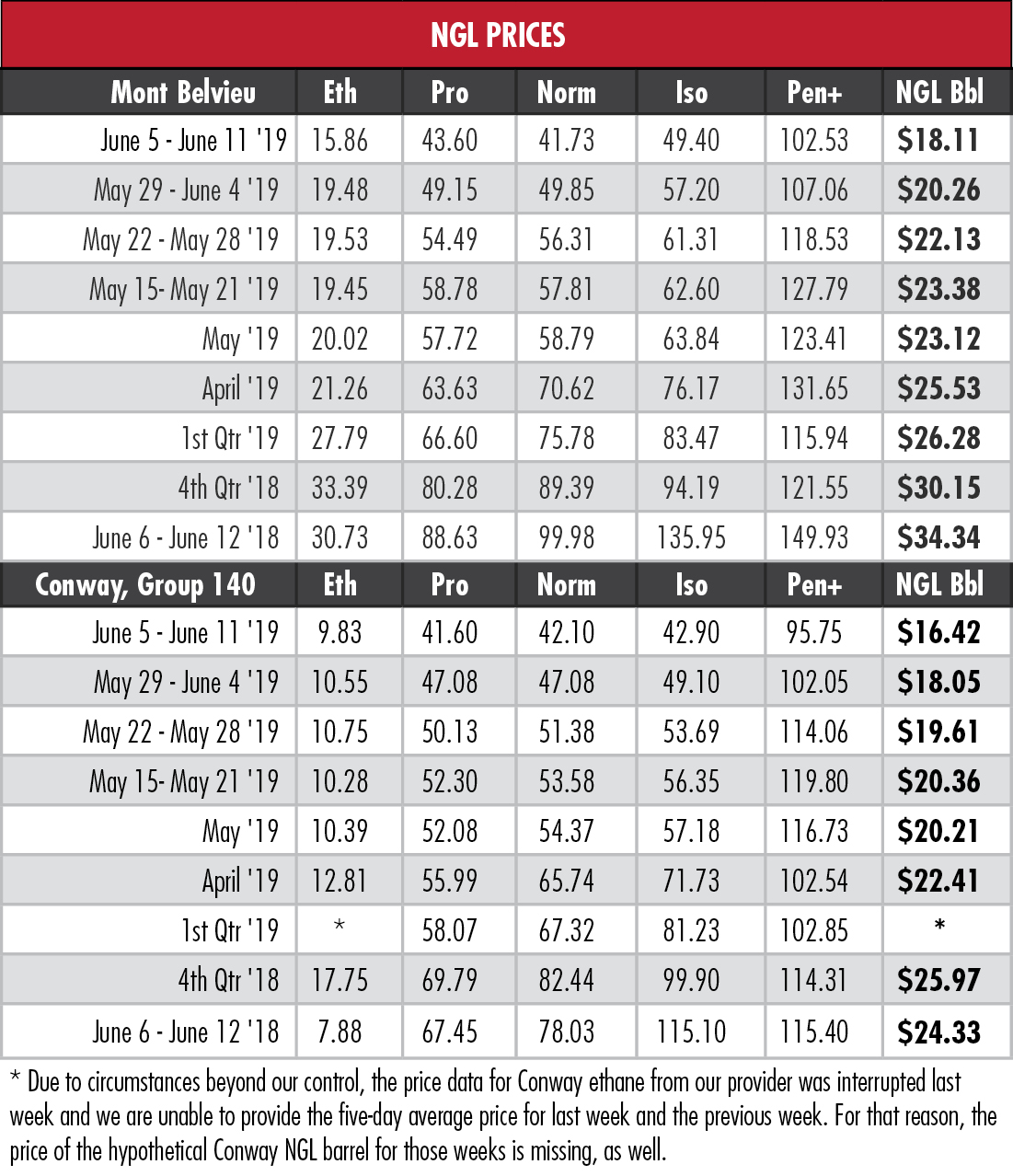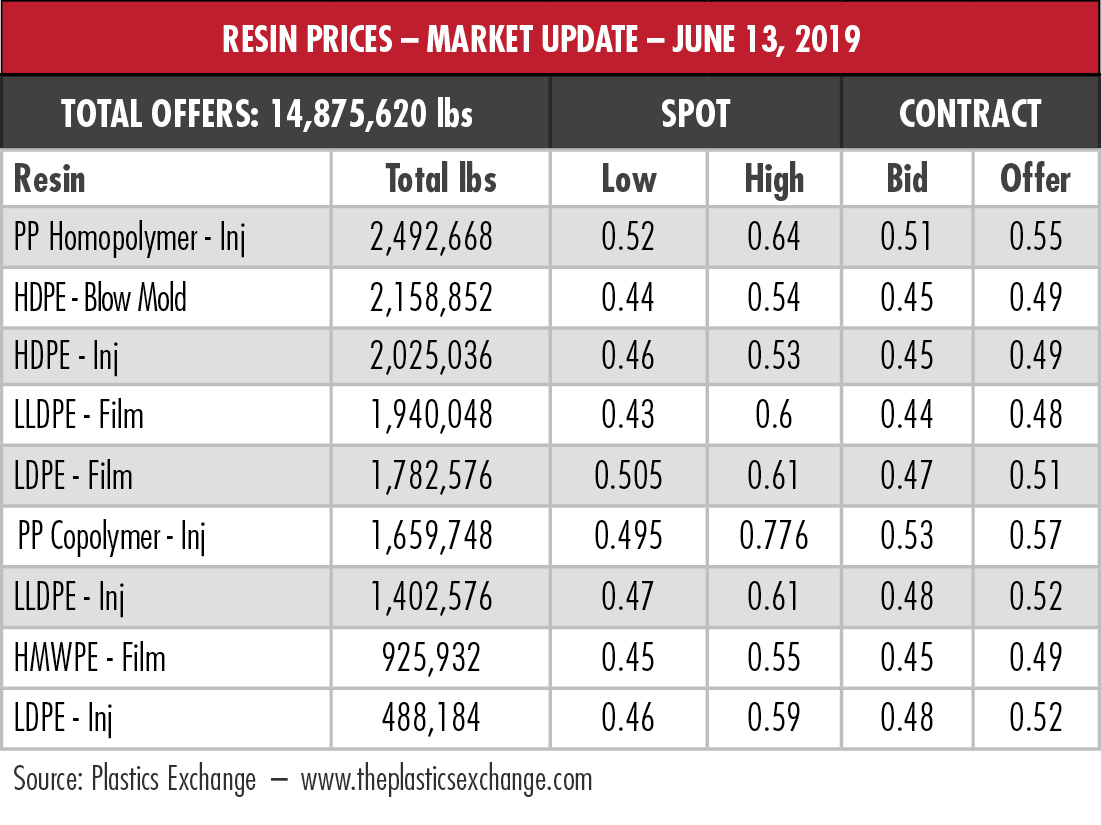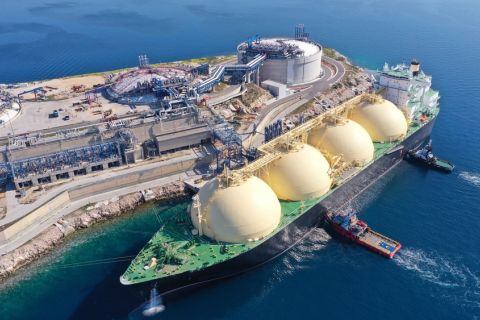
(Source: Shutterstock, Hart Energy)
How weak are NGL prices?
Start with butane. Last week’s Mont Belvieu, Texas, price was the lowest in the 13 years that Hart Energy has tracked NGL. The margin shrunk 28% from the previous week to 17 cents per gallon (gal).
That’s the most dramatic collapse, but there is plenty of gloom to go around Mont Belvieu:
- Ethane at its lowest point since March 2016 (last week’s margin was 0.22 cent/gal);
- Propane at its lowest point since August 2016; and
- The hypothetical barrel at its lowest point since April 2016.
You get the picture, and it’s not a pretty one. The U.S. crude oil benchmark, West Texas Intermediate (WTI), took a 4% hit on June 12, dropping to $51.14 per barrel. Since its sharp tumble at the end of May, the Henry Hub natural gas benchmark has lingered around $2.40 per million British thermal units (MMBtu).
 The underlying cause of market madness tends to be uncertainty. In this case, the uncertainty is prompted by the U.S.-China trade tensions that pose a risk to global oil markets, wrote Opportune LLP’s Ryan Dusek in a recent article.
The underlying cause of market madness tends to be uncertainty. In this case, the uncertainty is prompted by the U.S.-China trade tensions that pose a risk to global oil markets, wrote Opportune LLP’s Ryan Dusek in a recent article.
Dusek, director with the business advisory firm’s commodity risk advisory group, views the Trump administration’s expanded efforts to drive Iranian oil sales to zero as having a potentially bearish impact on global prices.
That approach might seem counterintuitive at first glance, but Dusek believes other OPEC+ members such as Saudi Arabia, Kuwait and Russia could fill the supply gap by increasing their production and replace Iranian barrels in the China and India markets. How much spare capacity other producers can provide will depend on OPEC’s meeting in Vienna on June 25.
But Dusek—at least in the short term—is bullish about oil.
“In the short term … I believe WTI could possibly set a new high for 2019,” he wrote. “I think there is an outside chance we could potentially breach $70/bbl this year.”
 Of course, Dusek is an analyst, not a Vegas bookie. He makes his home in the long term and that, he professes, is where the bears live.
Of course, Dusek is an analyst, not a Vegas bookie. He makes his home in the long term and that, he professes, is where the bears live.
“I am expecting long-term downward pressure on WTI crude oil prices,” he wrote, “and I eventually see them settling below $20/bbl in 2023.”
Ethane’s 18.6% drop from last week stems from high ethylene inventories, said EnVantage Inc. in a report. New crackers are coming online but they are unable to overcome price weakness.
“The impending boost in ethane demand should support ethane prices, but that can only occur, in our opinion, if crude and other NGL prices can stabilize,” the analysts wrote. So far, that’s just not happening.
Since the end of April, WTI is down 20%; Mont Belvieu ethane, 28%; propane, 32%; butane, 41%; isobutane, 36%; and natural gasoline, 23%. If the six-week comparisons seem harsh, examine the 12-month comparisons in the accompanying NGL price chart. In the short term, NGL prices will continue to suffer because of rising surpluses across the board.
 In the week ended June 7, storage of natural gas in the Lower 48 experienced an increase of 102 billion cubic feet (Bcf), the EIA reported. Meanwhile, Stratas Advisors predicted a 109 Bcf increase and the Bloomberg consensus was for a 110 Bcf increase. The figure resulted in a total of 2.088 trillion cubic feet (Tcf). That is 10% above the 1.899 Tcf figure at the same time in 2018 and 9.9% below the five-year average of 2.318 Tcf.
In the week ended June 7, storage of natural gas in the Lower 48 experienced an increase of 102 billion cubic feet (Bcf), the EIA reported. Meanwhile, Stratas Advisors predicted a 109 Bcf increase and the Bloomberg consensus was for a 110 Bcf increase. The figure resulted in a total of 2.088 trillion cubic feet (Tcf). That is 10% above the 1.899 Tcf figure at the same time in 2018 and 9.9% below the five-year average of 2.318 Tcf.
Technical issues with Hart Energy’s data provider do not allow us to provide the price of ethane from Conway, Kan., for the last week of March because of a loss of pricing data for that time period. For the same reason, we cannot compare the price of the hypothetical Conway NGL barrel to the previous week. Conway ethane prices are not available for March 2019 and first-quarter 2019. We apologize for the inconvenience.
Recommended Reading
Biden Totters the US LNG Line Between Environment, Energy Security
2024-01-30 - Recent moves by U.S. President Joe Biden targeting the country’s LNG industry, which has a number of projects in the works, are an attempt to satisfy environmentalists ahead of the next upcoming presidential election.
EQT’s Toby Rice: US NatGas is a Global ‘Decarbonizing Force’
2024-03-21 - The shale revolution has unlocked an amazing resource but it is far from reaching full potential as a lot more opportunities exist, EQT Corp. President and CEO Toby Rice said in a plenary session during CERAWeek by S&P Global.
The Problem with the Pause: US LNG Trade Gets Political
2024-02-13 - Industry leaders worry that the DOE’s suspension of approvals for LNG projects will persuade global customers to seek other suppliers, wreaking havoc on energy security.
Pitts: Producers Ponder Ramifications of Biden’s LNG Strategy
2024-03-13 - While existing offtake agreements have been spared by the Biden administration's LNG permitting pause, the ramifications fall on supplying the Asian market post-2030, many analysts argue.
Belcher: Election Year LNG ‘Pause’ Will Have Huge Negative Impacts
2024-03-01 - The Biden administration’s decision to pause permitting of LNG projects has damaged the U.S.’ reputation in ways impossible to calculate.






